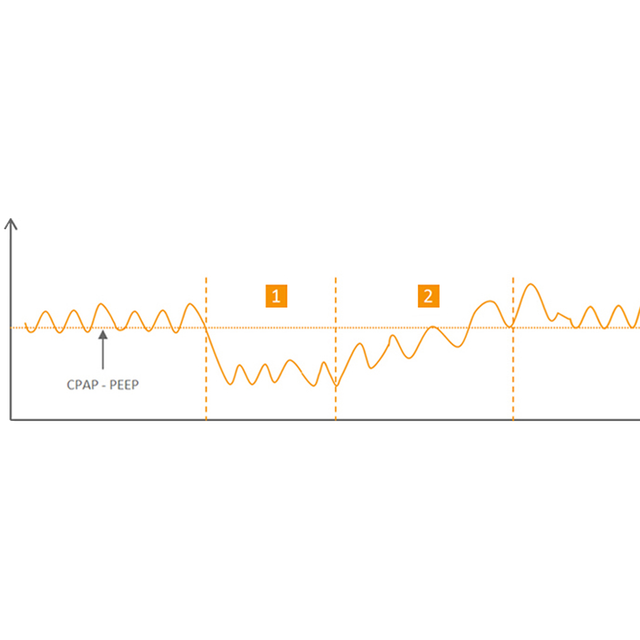Pressure losses via the mouth or via the application on the patient's nose are referred to as leakages. They represent a major and regularly occurring challenge for nursing care and the efficacy of the nCPAP therapy.
Many leakages can be corrected by optimizing the application, however they cannot always be prevented. This is especially true in cases of leakages via the mouth. If the pressure losses are too great, decreases in oxygen saturation as well as bradycardia can occur. Leakages frequently occur intermittently, that is, at varying intervals. It is not always possible to react to them with nursing measures.
Automatic leakage compensation helps you reliably care for your patients. Leakages and pressure losses which are presently occurring can thus be compensated without the need for manipulation on the patient.
The LeakAssist leakage compensation in the medinCNO, medinCNOmini and medin-NC3 devices provides you with a reliable, controlled and effective tool.
Automatic compensation of pressure losses
Controlled increase/reduction in gas flow
High degree of patient safety
Flow conditions fully visible
Can be optionally connected

LeakAssist can increase the breathing gas flow up to 2 L/min (medin-NC3: 5 L/min) to compensate for pressure losses less than 0.5 mbar as the target pressure. Likewise, the gas flow can be decreased up to 2 L/min (medin-NC3: 5 L/min) to quickly and reliably reduce pressure increases.
In conjunction with the individual alarm settings, you create a high degree of security for your small patients. If the target pressure is not achieved with maximum compensation, the device issues a corresponding alarm.
A function window in the display shows the selected target pressure as well as the compensation flow in real time. Thus you have full control over flow conditions at all times.
1 Pressure decrease due to leakage
2 Gradual raising of the pressure through additional gas flow